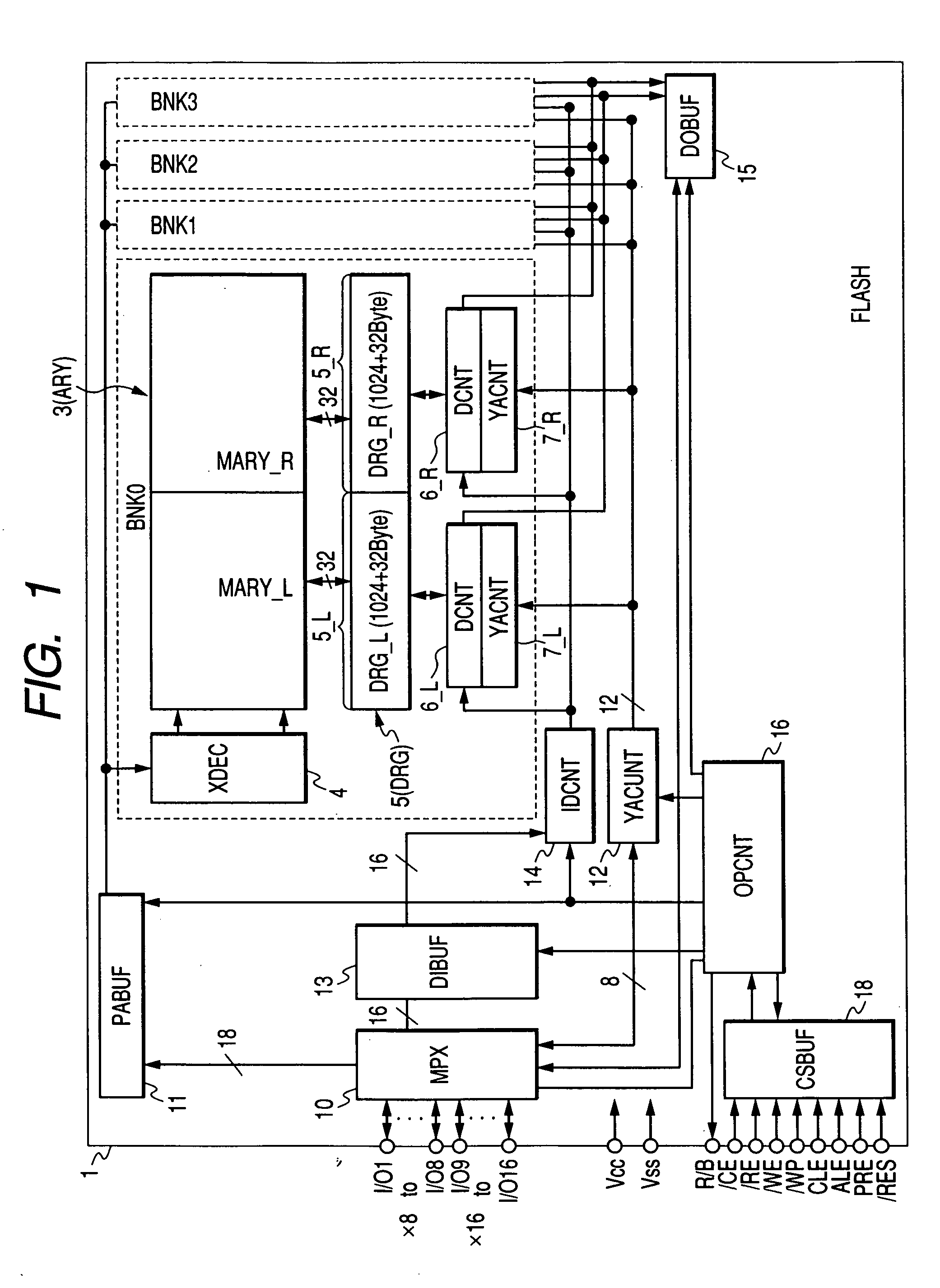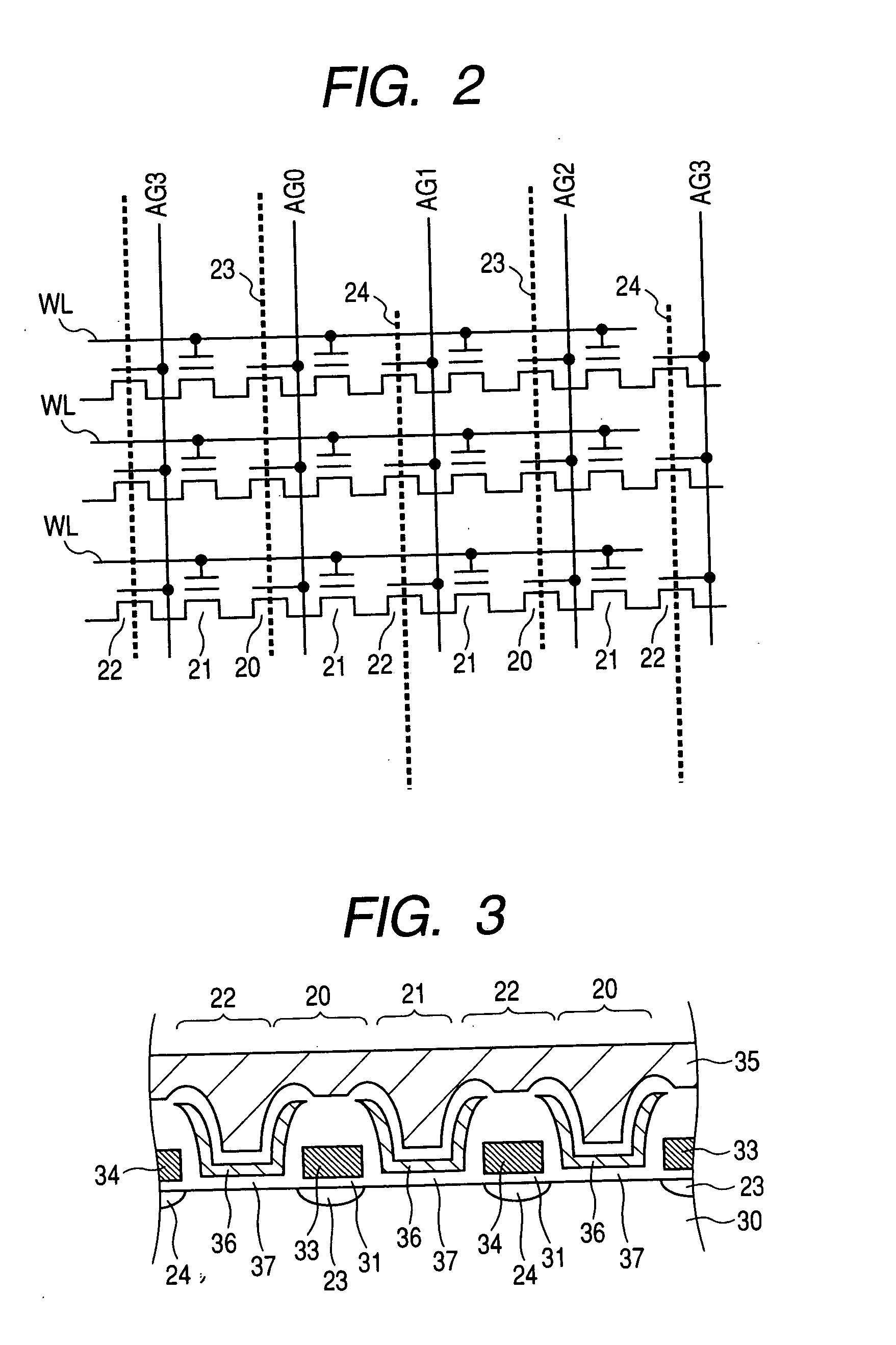Nonvolatile memory
a non-volatile memory, non-volatile technology, applied in static storage, digital storage, instruments, etc., can solve the problem that the reduction of write speed becomes inescapable, and achieve the effect of improving the write performance of memory information
- Summary
- Abstract
- Description
- Claims
- Application Information
AI Technical Summary
Benefits of technology
Problems solved by technology
Method used
Image
Examples
Embodiment Construction
>
[0096] A flash memory is illustrated in FIG. 1. The flash memory 1 is formed over one semiconductor substrate such as monocrystalline silicon or the like.
[0097] Although not restricted in particular, the flash memory 1 has four memory banks BNK0 through BNK3. The respective memory banks BNK0 through BNK3 have configurations identical to one another and can be operated in parallel. The configuration of the memory bank BNK0 is typically illustrated in detail in the figure. Each of the memory banks BNK0 through BNK3 includes a flash memory array (ARY) 3, an X decoder (XDEC) 4, a data register (DRG) 5, data controllers (DCNT) 6_R and 6_L, and Y address controllers (YACNT) 7_R and 7_L.
[0098] The memory array 3 has a large number of electrically erasable and programmable nonvolatile memory transistors. The details of the memory array will be described in detail later. However, the memory array is configured as a stacked gate structure in which memory gates are stacked on one another in...
PUM
 Login to View More
Login to View More Abstract
Description
Claims
Application Information
 Login to View More
Login to View More - R&D
- Intellectual Property
- Life Sciences
- Materials
- Tech Scout
- Unparalleled Data Quality
- Higher Quality Content
- 60% Fewer Hallucinations
Browse by: Latest US Patents, China's latest patents, Technical Efficacy Thesaurus, Application Domain, Technology Topic, Popular Technical Reports.
© 2025 PatSnap. All rights reserved.Legal|Privacy policy|Modern Slavery Act Transparency Statement|Sitemap|About US| Contact US: help@patsnap.com



